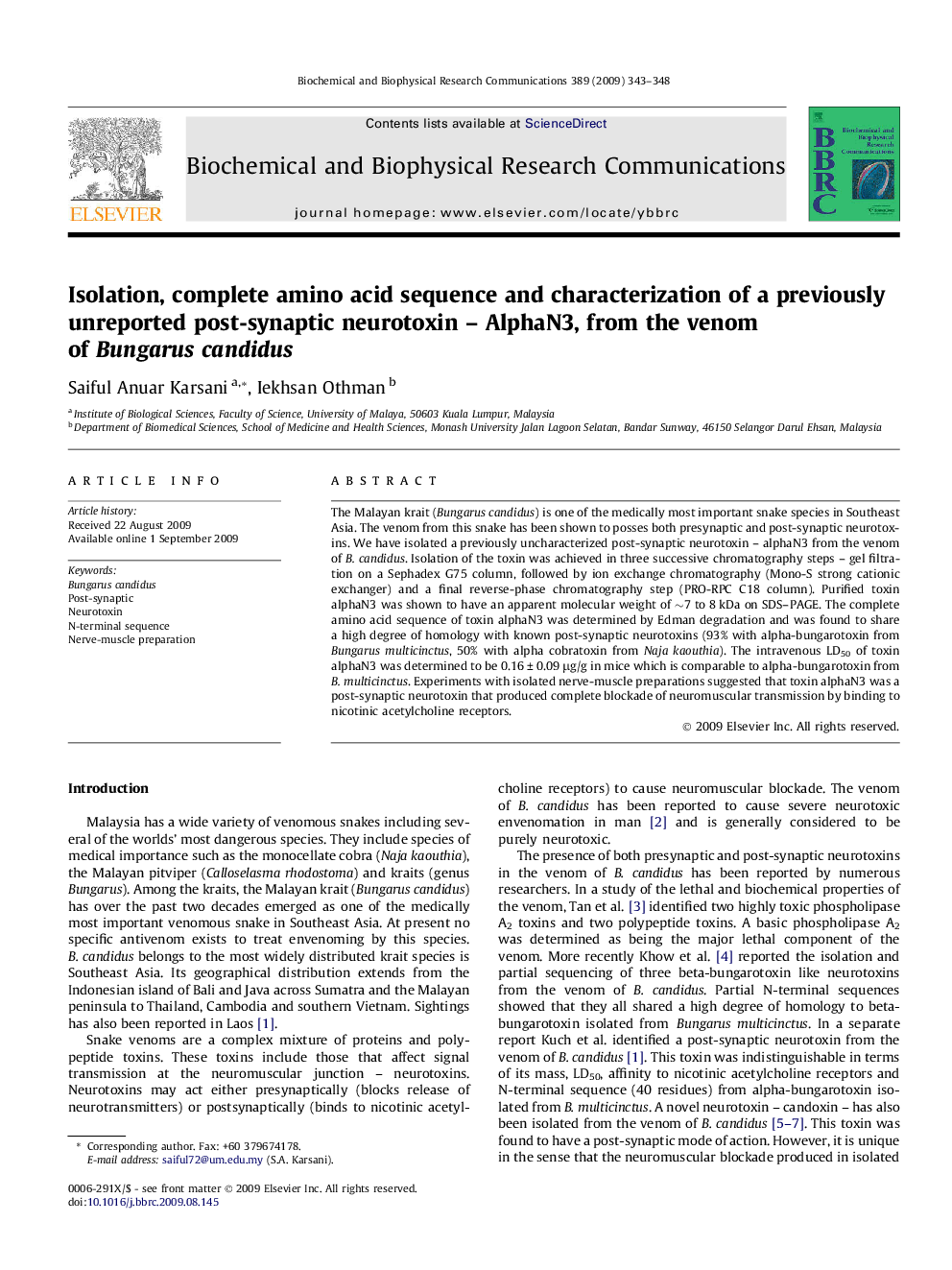| Article ID | Journal | Published Year | Pages | File Type |
|---|---|---|---|---|
| 1932726 | Biochemical and Biophysical Research Communications | 2009 | 6 Pages |
The Malayan krait (Bungarus candidus) is one of the medically most important snake species in Southeast Asia. The venom from this snake has been shown to posses both presynaptic and post-synaptic neurotoxins. We have isolated a previously uncharacterized post-synaptic neurotoxin – alphaN3 from the venom of B. candidus. Isolation of the toxin was achieved in three successive chromatography steps – gel filtration on a Sephadex G75 column, followed by ion exchange chromatography (Mono-S strong cationic exchanger) and a final reverse-phase chromatography step (PRO-RPC C18 column). Purified toxin alphaN3 was shown to have an apparent molecular weight of ∼7 to 8 kDa on SDS–PAGE. The complete amino acid sequence of toxin alphaN3 was determined by Edman degradation and was found to share a high degree of homology with known post-synaptic neurotoxins (93% with alpha-bungarotoxin from Bungarus multicinctus, 50% with alpha cobratoxin from Naja kaouthia). The intravenous LD50 of toxin alphaN3 was determined to be 0.16 ± 0.09 μg/g in mice which is comparable to alpha-bungarotoxin from B. multicinctus. Experiments with isolated nerve-muscle preparations suggested that toxin alphaN3 was a post-synaptic neurotoxin that produced complete blockade of neuromuscular transmission by binding to nicotinic acetylcholine receptors.
